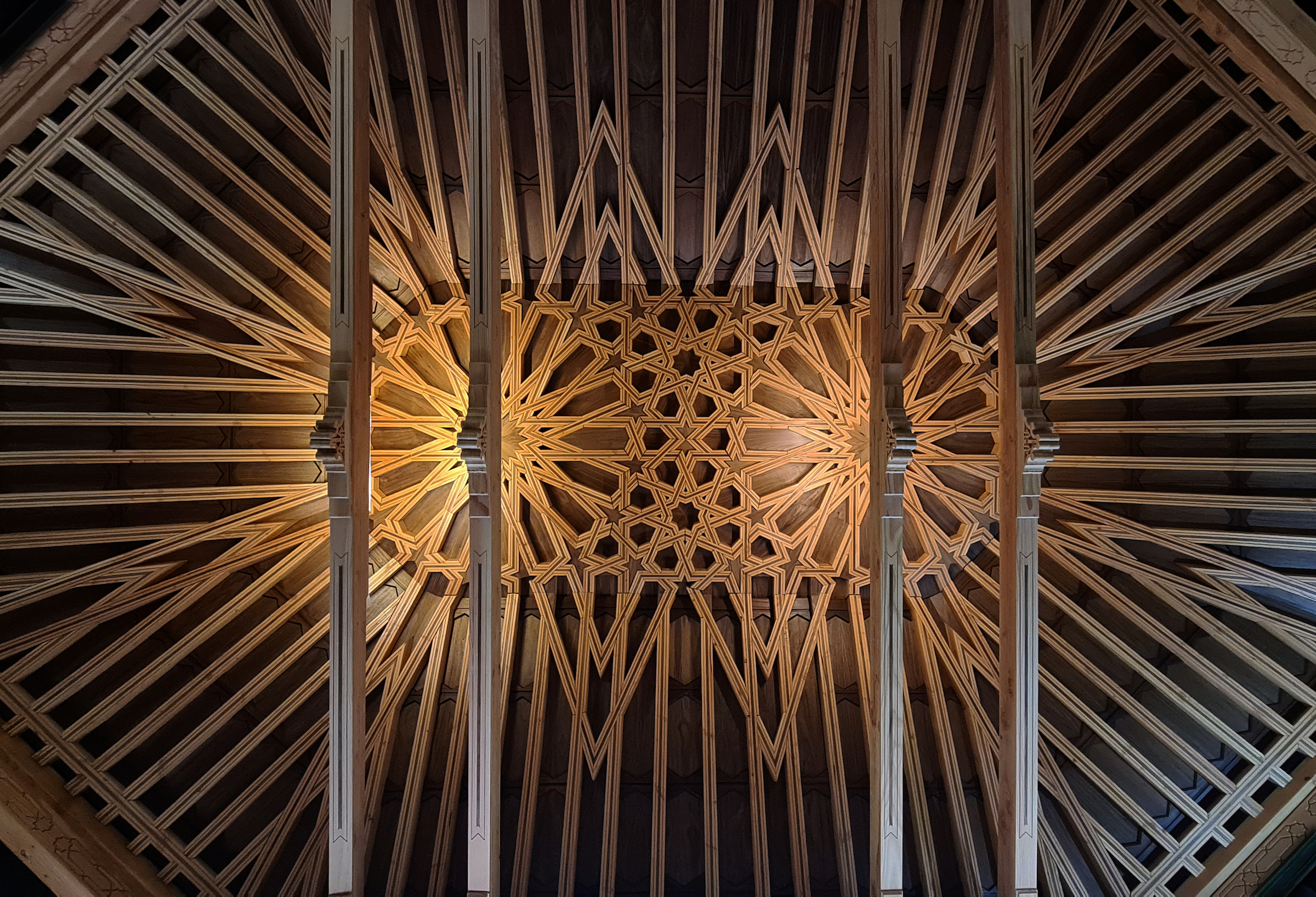LOS ANGELES — The Museum of Jurassic Technology (MJT) specializes in the kind of wonder found in the encyclopedic museums of bygone eras, mixing art and science, fact and fiction, history and whimsy. Since its founding in 1988, it has presented exhibitions on a diverse array of subjects — some of dubious veracity, including the Microminiatures of Hagop Sandaldjian, Ricky Jay’s collection of decaying dice, the stink ant of Cameroon, and Soviet space dogs. This September, as part of the upcoming PST ART initiative focused on the intersection of art and science, the museum will take on its most ambitious endeavor yet: an exploration of Islamic architectural forms created in Spain from the 9th through the 16th centuries.
“Hands down, it’s the largest project we’ve ever done at the museum by a lot,” David Wilson, the museum’s founder, told Hyperallergic of A Veiled Gazelle – Intimations of the Infinite and Eternal – Islamic Geometries of Medieval al-Andalus.
The roots of the exhibition lie far from Spain, however, in the Central Asian nation of Uzbekistan. Wilson and a small crew had traveled there in 2007 during the making of the film The Great Soviet Eclipse, which chronicled Soviet astronomers who moved from Leningrad to Uzbekistan fleeing Soviet repression in the 1930s.
“We were just knocked out by these stunningly beautiful architectural monuments …particularly by muqarnas, honeycomb-like geometric forms,” Wilson explained. Muqarnas are essentially highly decorative versions of the squinch, an architectural element that marks the transition from straight walls to a curved dome. The earliest examples of this centuries-old form are located in Iran and Uzbekistan, but they are seen throughout the Islamic world, including in Al-Andalus, parts of the Iberian Peninsula that were Muslim-ruled from 711 to 1492.
Based on his MacArthur Foundation award-winning fusion of the technical and creative, Wilson was approached by the Getty Foundation a few years ago and encouraged to submit a proposal for the PST initiative opening this falll. He received two grants totalling $210,000 for research and implementation for A Veiled Gazelle, which will focus on the development of muqarnas and lacería, another type of Islamic geometric ornament formed by intersecting lines found in Muslim Spain. Wilson notes that Andalusian versions of these forms are unique in that they represent a synthesis of Islamic design with European building practices, notably in wood.
The grants funded trips to Spain to visit important examples of these forms, including the Alhambra. The museum also collaborated with artist Ángel María Martín, founder of Centro de Interpretación de la Carpintería Mudéjar in Ávila, who spent three weeks in LA in 2022 teaching Wilson and his team “how to make these crazy ceilings entirely out of wood,” Wilson said. After Martín left, the MJT crew was tasked with following his techniques, using traditional plaster and woodwork as well as 3-D printing to fabricate all the elements in their workshop, the largest of which is a lacería ceiling that measures roughly 22 by 15 feet.

Although the museum received substantial support from the Getty, it still needed additional funds to realize the project. In April, the Mike Kelley Foundation announced the recipients of its fourth annual Operational Support Grants, a program originally set up during the pandemic to support the pressing needs of LA County arts organizations. Totaling $400,000, the grants were awarded to a range of established and emerging institutions, from LAXART and REDCAT to the Coaxial Arts Foundation, Self-Help Graphics, Human Resources, and Fulcrum Arts. MJT received $28,000 to bring the new permanent exhibition, which will span three gallery spaces, to life.
Wilson’s interest in Andalusian muqarnas and lacería comes not only from their breathtaking aesthetic and mathematical qualities, but from the social and political forces that made them possible. This era is often referred to as the Convivencia, a period of relative harmony and exchange between Muslim, Christian, and Jewish communities in Medieval Spain, from the Muslim conquest to the Catholic Reconquista in 1492.
“Scholars, artists, scientists, musicians, were all working together. There was an enormous amount of translation between Hebrew, Arabic, Latin,” Wilson said. “Given the state of the world in which we live, that felt like something that was important to talk about as well.”



